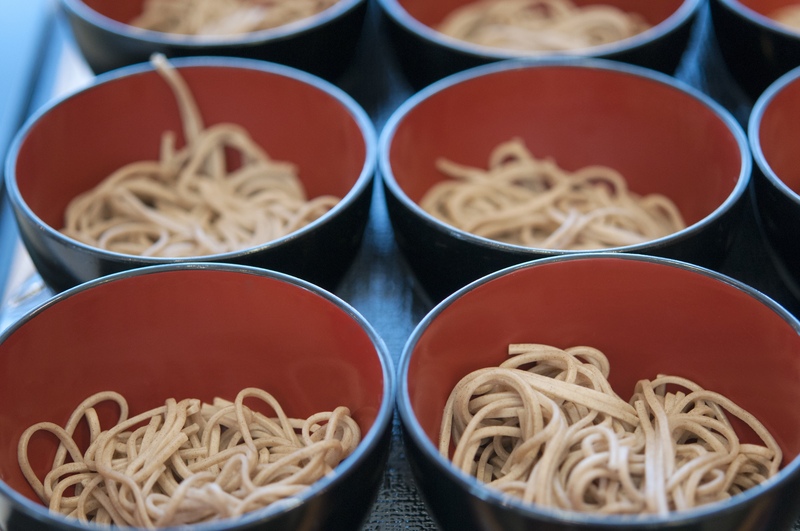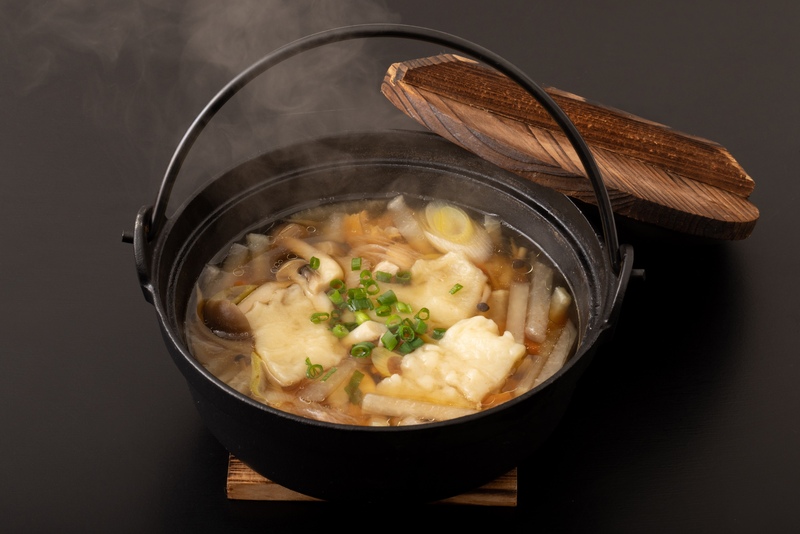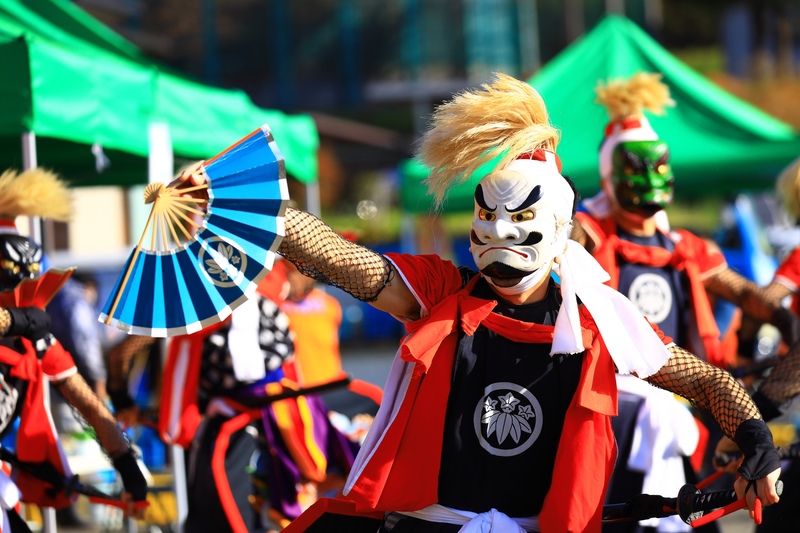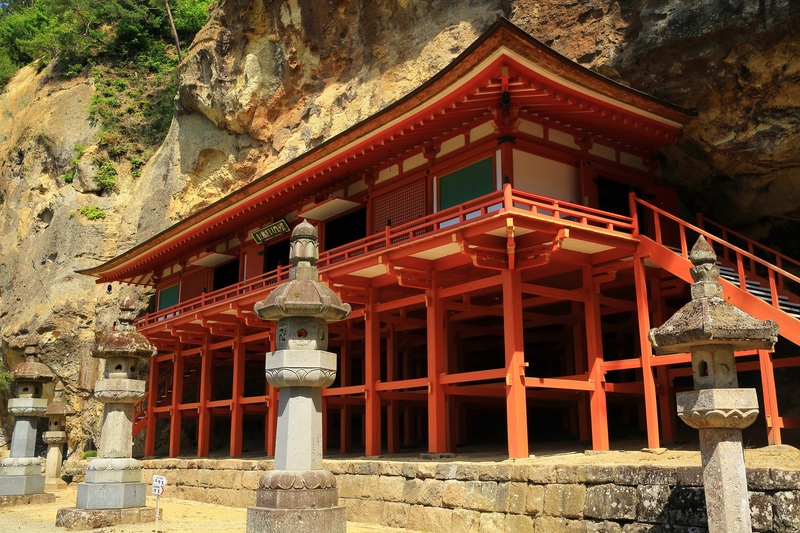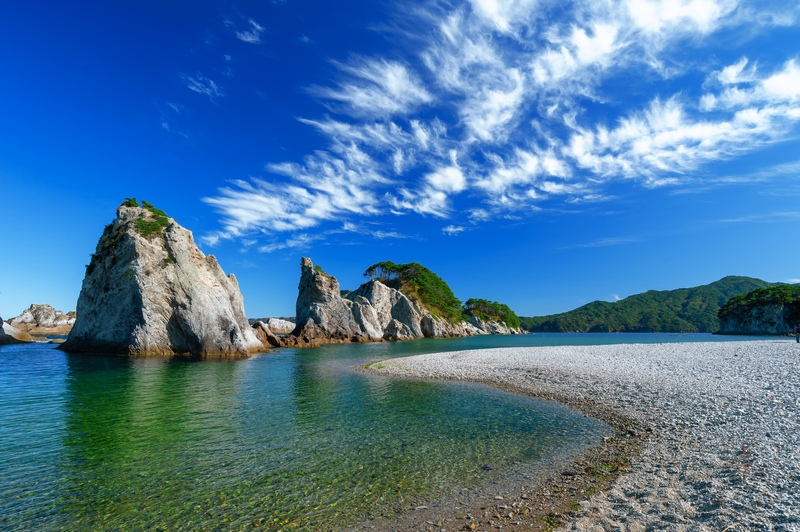What makes Chūson-ji special? Its history and overview
Chūson-ji, located in Hiraizumi Town, Iwate Prefecture, is known as a treasure trove of Japanese Buddhist architecture.
Its history dates back 850 years, when it was founded by the Tendai sect monk Jikaku Daishi Ennin. Chūson-ji was rebuilt by Fujiwara no Kiyohira to pray for the prosperity and peace of the Ōshū Fujiwara clan, aiming to create a Buddhist utopia.
As a result, the temple grounds preserve rich Buddhist art centered on the Konjikidō (Golden Hall), which is often seen as a symbol of the region’s golden culture.
In 2011, together with the surrounding cultural properties, it was registered as a UNESCO World Heritage Site under the title "Hiraizumi — Buddhist Pure Land and its Cultural Landscape."
This article introduces the must-see attractions of Chūson-ji for international visitors and provides useful information for planning a visit.

Highlights & sightseeing spots
1. Konjikidō (Golden Hall)
The Konjikidō, the symbol of Chūson-ji, is a lavish hall entirely covered with gold leaf.
Built in the late Heian period, it symbolizes the splendor of the Ōshū Fujiwara clan.
Inside the hall are statues centered on Amida Nyorai, and the interior decorations include pearls and mother-of-pearl inlay (raden).
Its beauty is breathtaking and continues to captivate visitors.
- Visiting hours: 8:30 AM to 5:00 PM (varies by season)
- Admission fee: Adults 1,000 yen
2. Chūson-ji Main Hall
The Main Hall is a place where visitors can quietly offer prayers.
Sutras are chanted here daily, and the solemn atmosphere can be deeply moving for visitors.
Ancient trees that have stood since the Heian period and seasonal flowers surround the Main Hall, offering scenic views throughout the year.
3. Benkei Hall (along the approach)
On the temple grounds is Benkei Hall, associated with the legendary warrior monk Musashibō Benkei, famed as the retainer of Minamoto no Yoshitsune.
Statues of Yoshitsune and Benkei are enshrined here, which is why it’s called Benkei Hall.
The coffered ceiling inside the hall is painted with floral motifs.
Strolling here while feeling the legends and history gives a sense of the Heian period’s spirit.
4. Hiking the approach
The approximately 1.6-kilometer approach runs from the temple entrance to the Konjikidō.
Surrounded by greenery, the path offers different scenery in every season.
Autumn in particular is stunning, and simply walking the approach will leave you enchanted by the colors.
- Approximate time: about 30 minutes on foot
5. Treasure House: Sankōkura Sankōzō
The treasure house at Chūson-ji displays numerous cultural properties and Buddhist artworks dating back to the Heian period.
You can see detailed items associated with the Konjikidō and historical artifacts related to Chūson-ji, which deepens your understanding of the temple’s history.

What to enjoy each season
Spring (April–May)
When cherry blossoms color the temple grounds, the area becomes lively with many visitors.
The row of cherry trees along the approach is a springtime feature and a popular photo spot.
Summer (June–August)
In summer, the fresh green foliage is beautiful, and you can leisurely stroll through Chūson-ji surrounded by verdant trees.
Walking in the cool breeze gives a feeling of being one with nature.
Autumn (October–November)
Autumn foliage season is one of the most beautiful times to visit Chūson-ji.
Red and yellow leaves combined with historic buildings create a wonderful landscape.
The approach is especially spectacular, and many visitors come every year.
Winter (December–February)
Chūson-ji covered in snow presents a quiet, almost otherworldly beauty.
With fewer tourists, it’s an ideal time to calmly reflect on the history of the site.

Access to Chūson-ji
Public transportation
- JR Tohoku Shinkansen: From Tokyo Station take the JR Tohoku Shinkansen to Ichinoseki Station (about 2.5 hours). From Ichinoseki Station take the JR Tohoku Main Line to Hiraizumi Station (about 10 minutes).
- Bus: From Hiraizumi Station it’s about a 20-minute walk, or take a local bus and get off at the "Chūson-ji" stop.
By car
From the Tōhoku Expressway "Hiraizumi-Maezawa IC," it’s about a 10-minute drive to the Chūson-ji parking lot.
Parking is paid, and the lot can get crowded during the tourist season, so arriving early is recommended.

Useful information for travelers
- Currency exchange: Available around Ichinoseki Station.
- Wi‑Fi: There are tourist Wi‑Fi areas available near Chūson-ji.
- Clothing: Prepare warm clothing in winter. Comfortable walking shoes are recommended.
Summary
Chūson-ji is a special place where history, culture, and beautiful nature come together.
Visit highlights such as the Konjikidō to feel the beauty of Japanese Buddhist art and the splendor of the Fujiwara clan.
With scenery that changes through the seasons, Chūson-ji always offers new discoveries no matter how many times you visit.
Frequently Asked Questions
Q1. How much is the admission fee for Chūson-ji?
A1. Admission to the Konjikidō is 800 yen for adults. The treasure house requires an additional 300 yen.
Q2. What time can I start visiting Chūson-ji?
A2. Hours vary by season, but generally from 8:30 AM to 5:00 PM.
Q3. What is the nearest station to Chūson-ji?
A3. The nearest station is Hiraizumi Station on the JR Tohoku Main Line.
Plan a visit to Chūson-ji as a highlight of your trip to Iwate and enjoy exploring its rich history.





